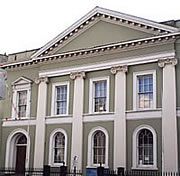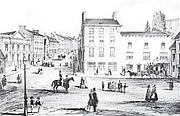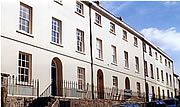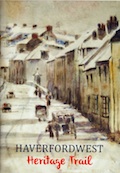Mixed Fortunes 1300-1900

During much of the medieval period the town’s prosperity was guaranteed by charters and special privileges conferred by a succession of noble or royal patrons. These gave exemption from tolls and granted a monopoly of particular trades.
In the early 14th century medieval Haverford reached its apogee. The so called crypt visible at the upper end of High Street (the vaulted cellar of what had probably been a merchant’s house) demonstrates that constructional skills in stone were by no means confined to church building. Then, in mid-century, the Black Death suddenly decimated the town’s population.

It took approximately 150 years to recover from the catastrophe of the Black Death. By that time the suffix ‘west’ had become firmly attached to the name Haverford, apparently to distinguish it from the city of Hereford. Writing in the next century Shakespeare called it ‘Ha’rford-west’, as it is frequently pronounced to this day.
By and large the town continued to prosper under the Tudors and early Stuarts. But with the Civil War came renewed depression, prolonged and greatly intensified by a return of the plague.

The town we see today is essentially a relic of the 18th and 19th centuries. It became a centre for an increasingly wealthy society that was all but cut off - except by sea - from the rest of the country. Thus Pembrokeshire gentry often kept town houses in Haverfordwest. Foley House in Goat Street, for example, was designed by John Nash for one of the Foley family whose country seat was half a dozen miles away.
The most famous of the Foleys was Admiral Sir Thomas Foley, a comrade in arms and close friend of Nelson. Another hero of the Napoleonic War, General Sir Thomas Picton, was born in a town house in Hill Street. He was killed at Waterloo.
During the 19th century Haverfordwest was radically remodelled by William Owen, son of a local cabinet-maker and an architect of amazing vision and energy. Owen swept away crumbling hovels and replaced them with fine terraces. He erected numbers of public buildings (including the former Corn Market at the top of Market Street, now occupied by a cinema, and most notably the Shire Hall). And he transformed the eastern approach to the town by creating new streets (Victoria Place and Picton Place), plus the New Bridge (which he financed himself), in effect forming an extension of the High Street.
William Owen was four times mayor of Haverfordwest. Haverfordians still walk, literally, in his shadow.

